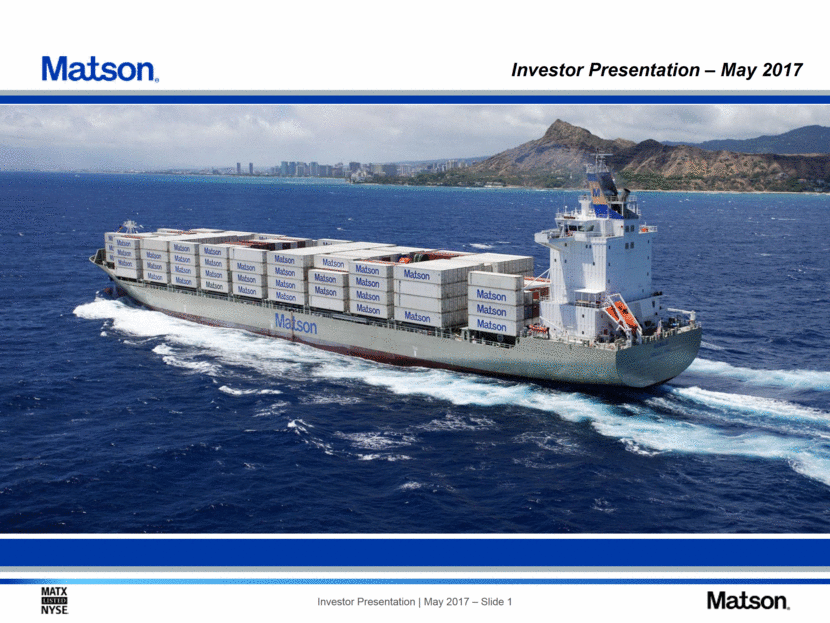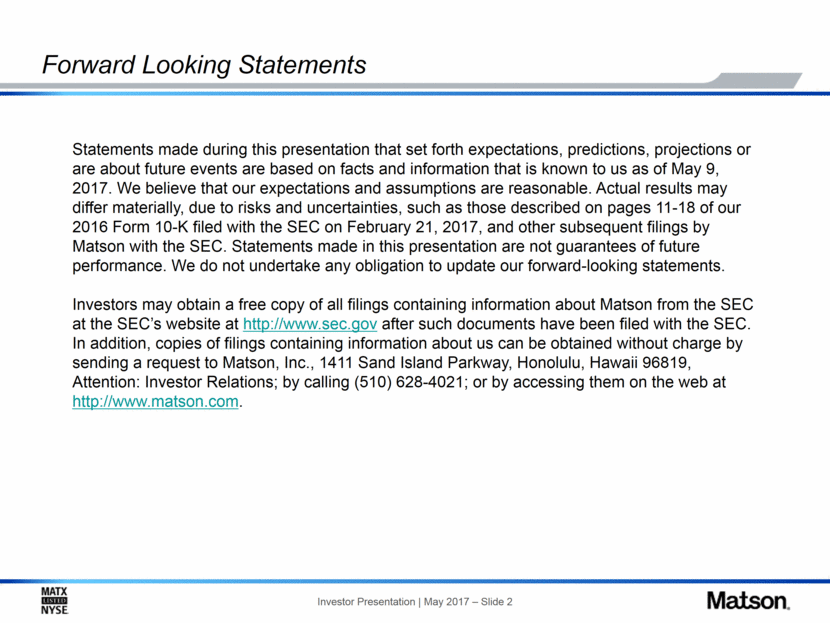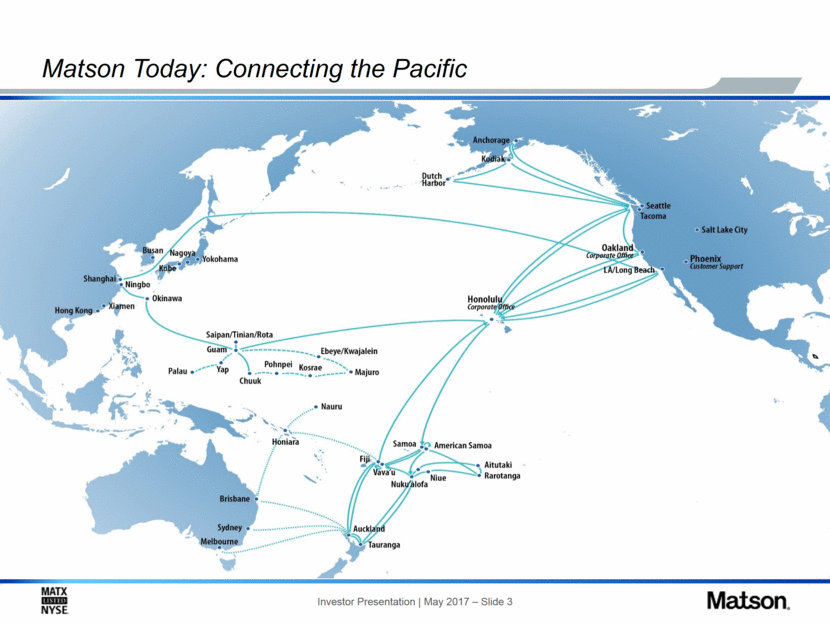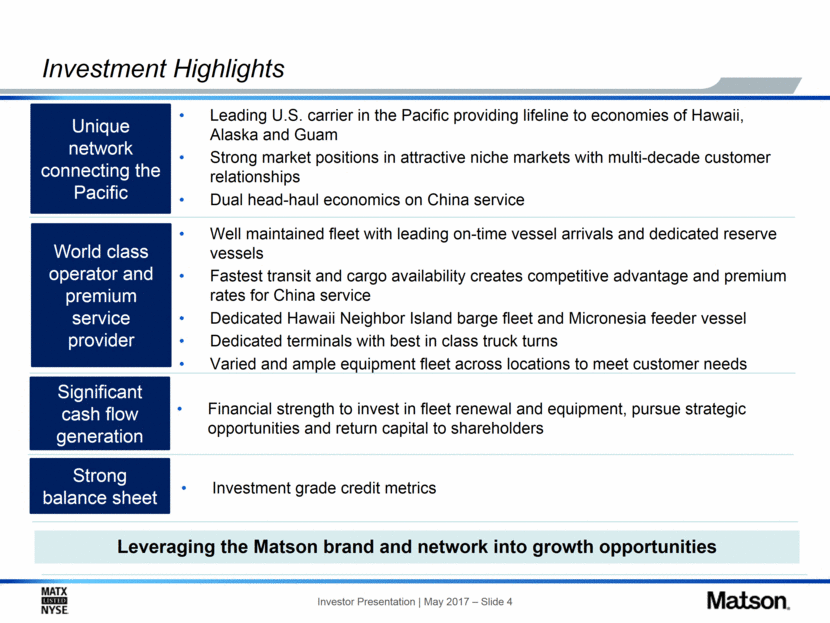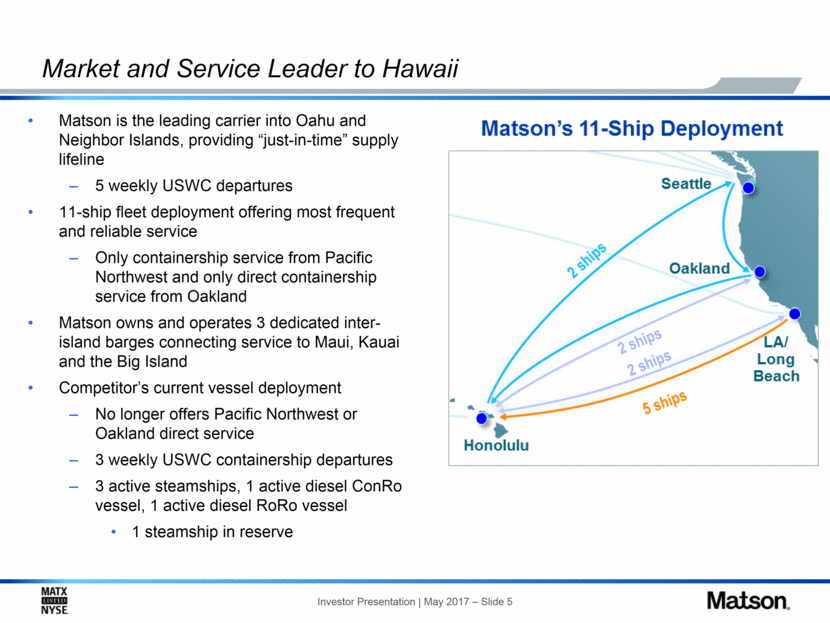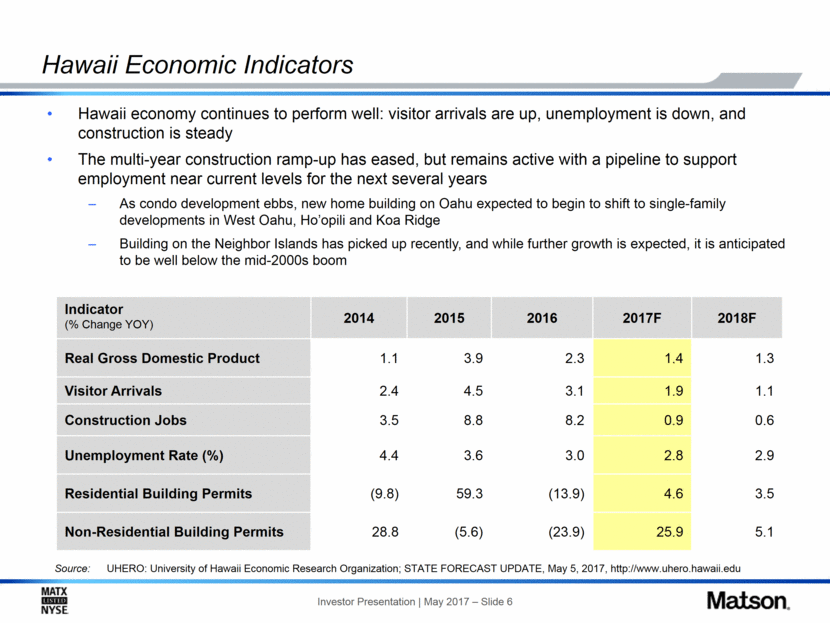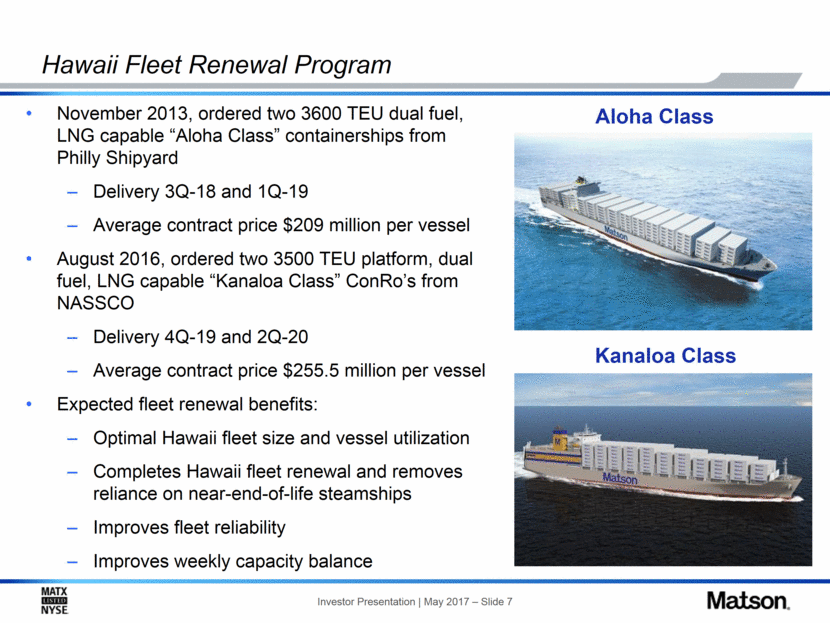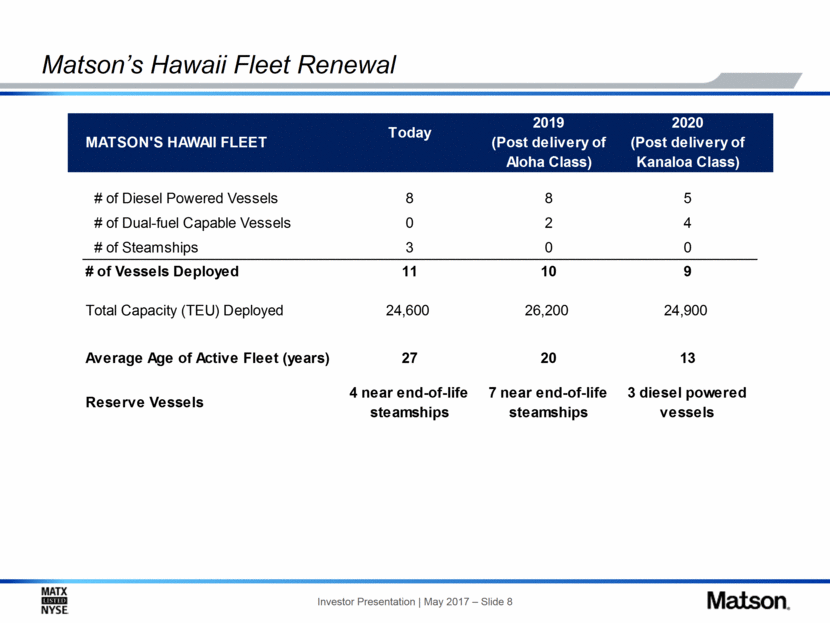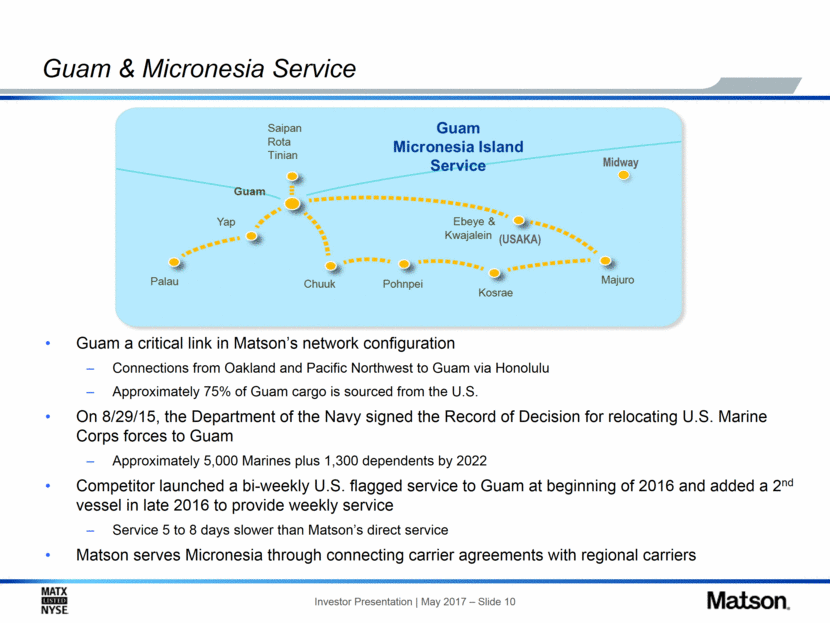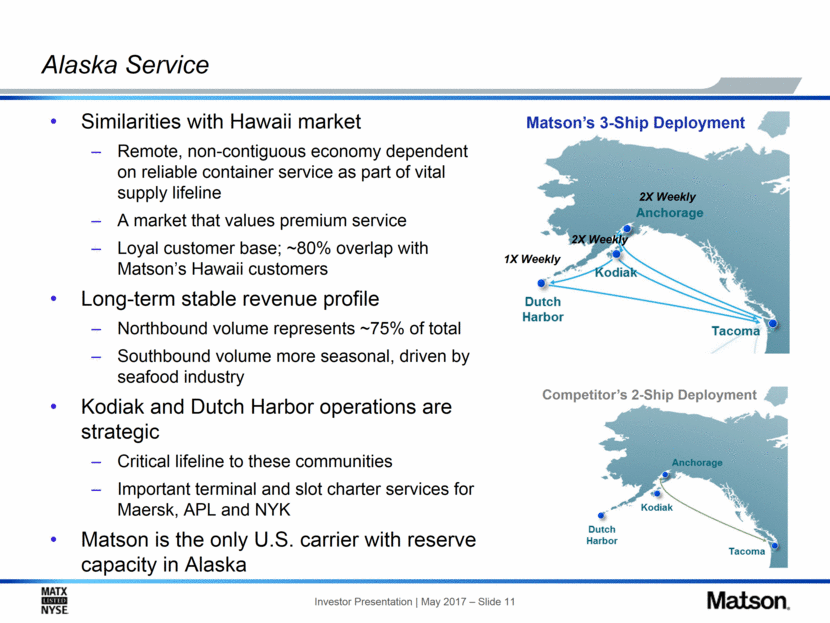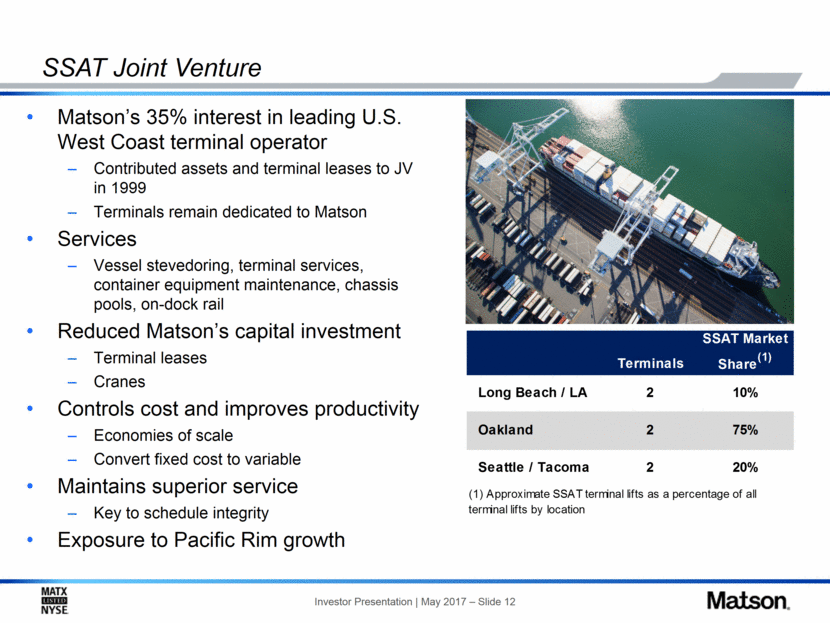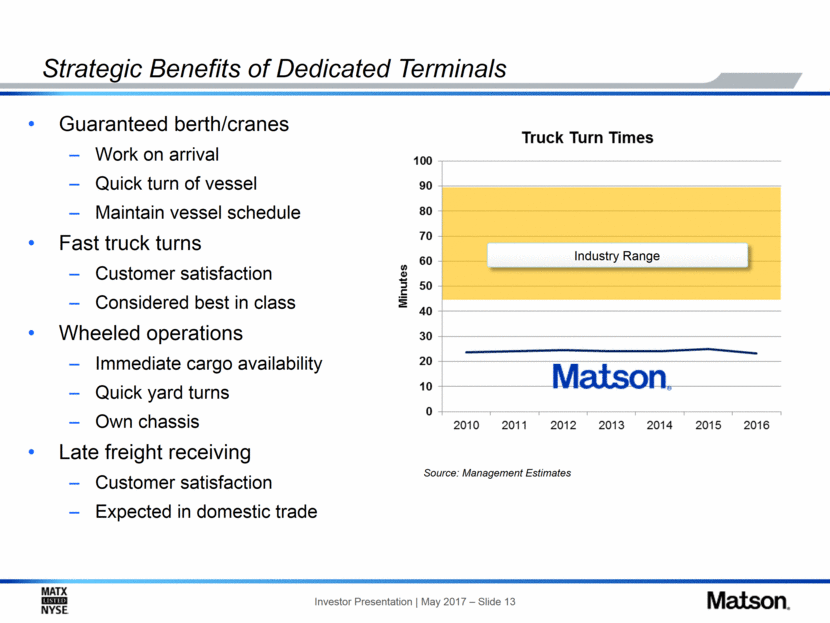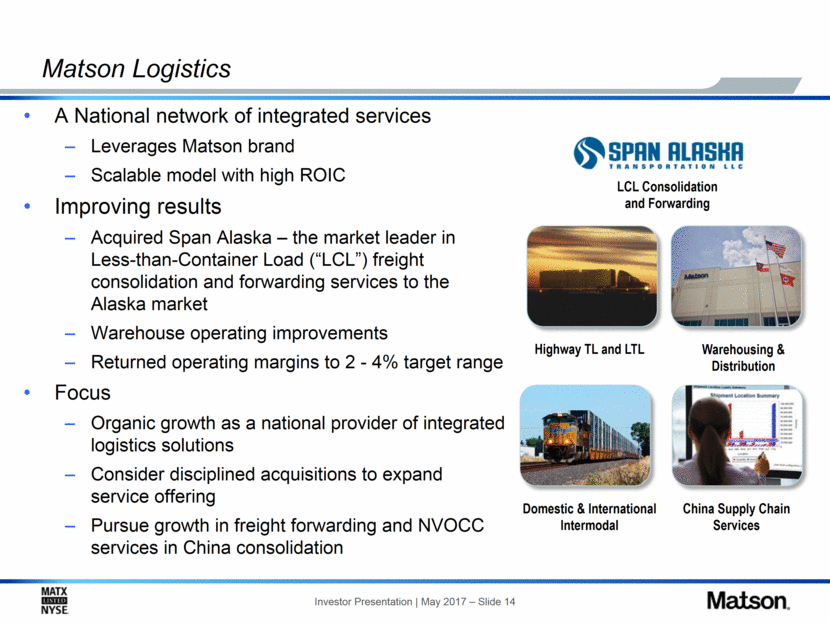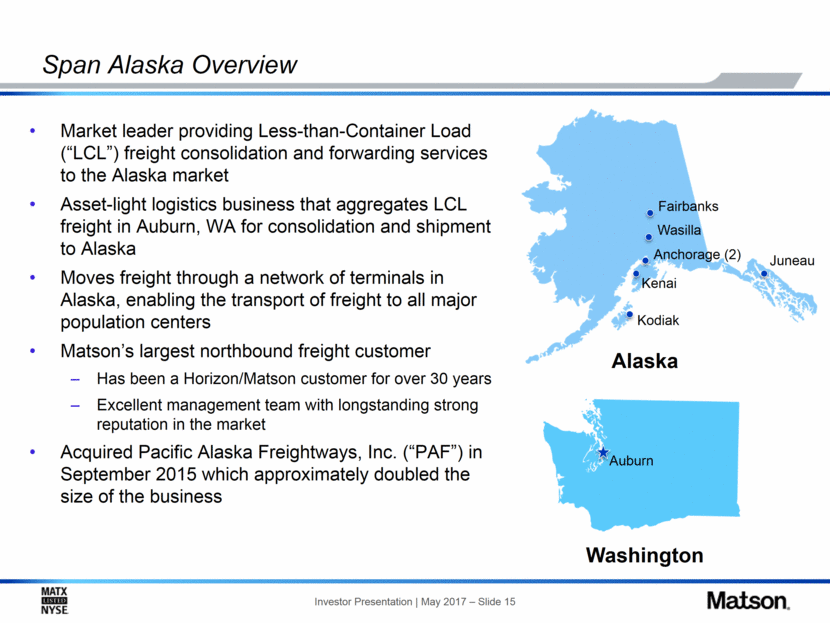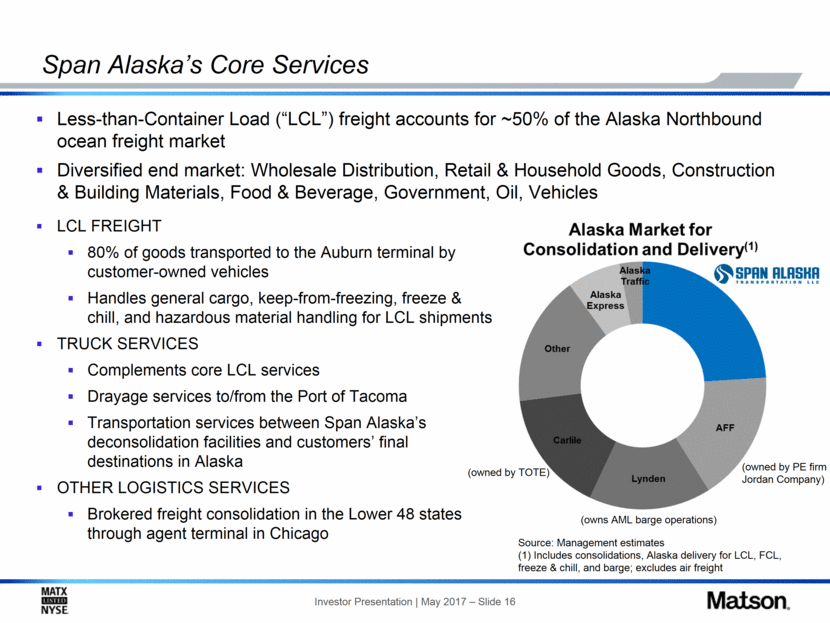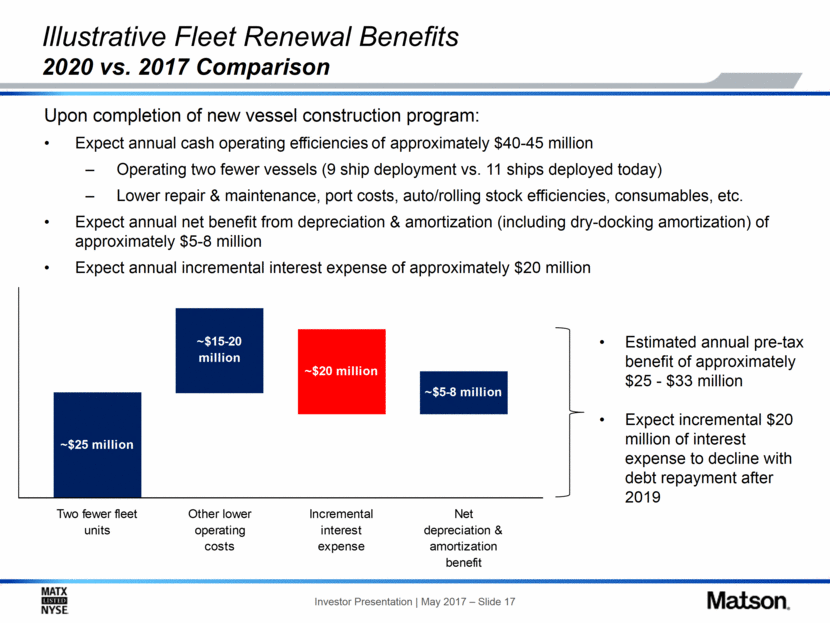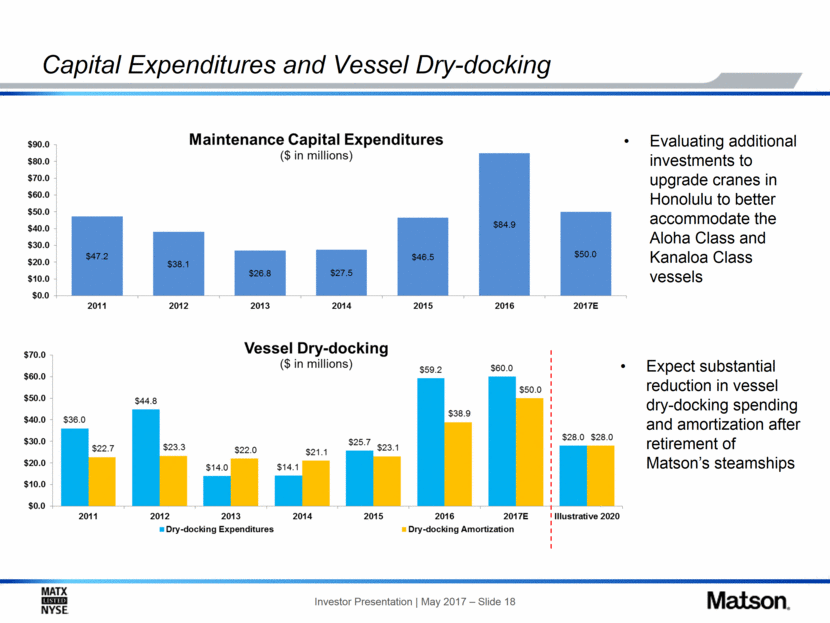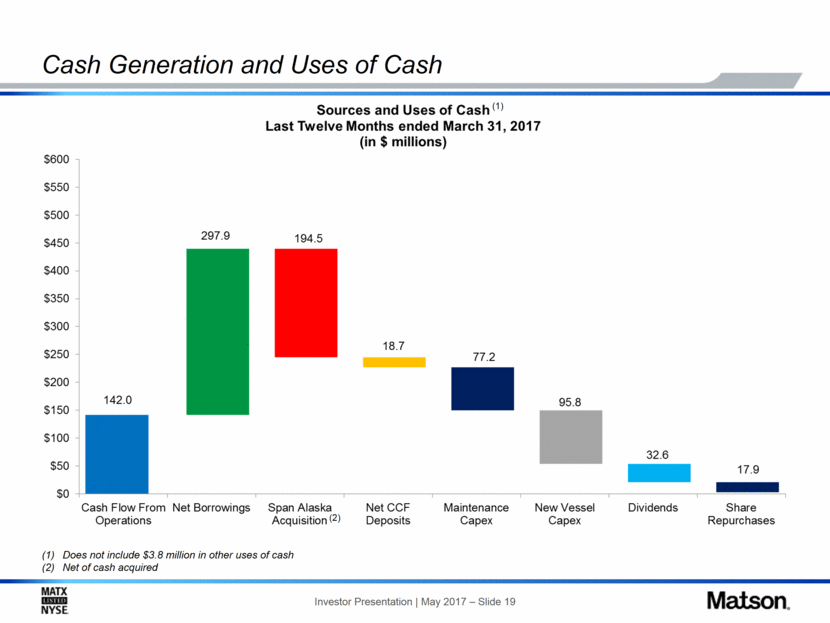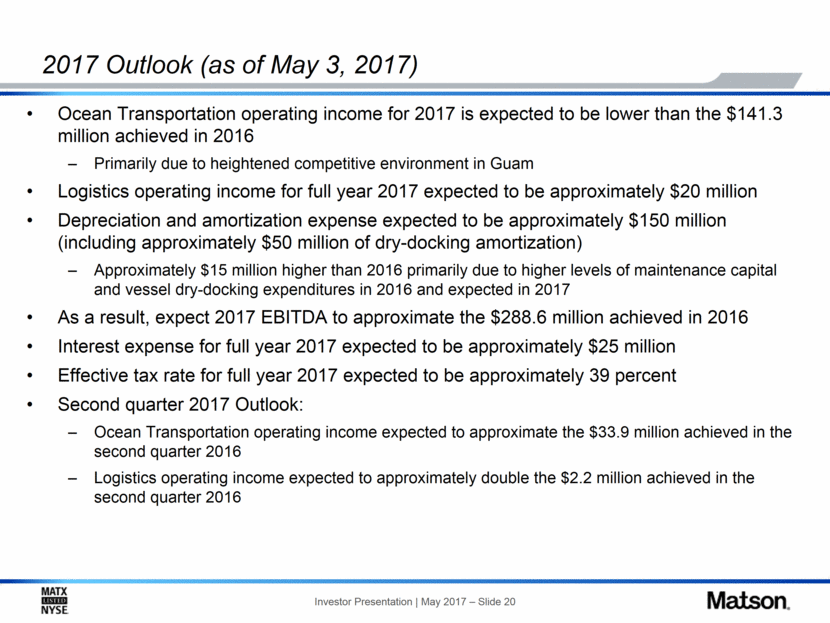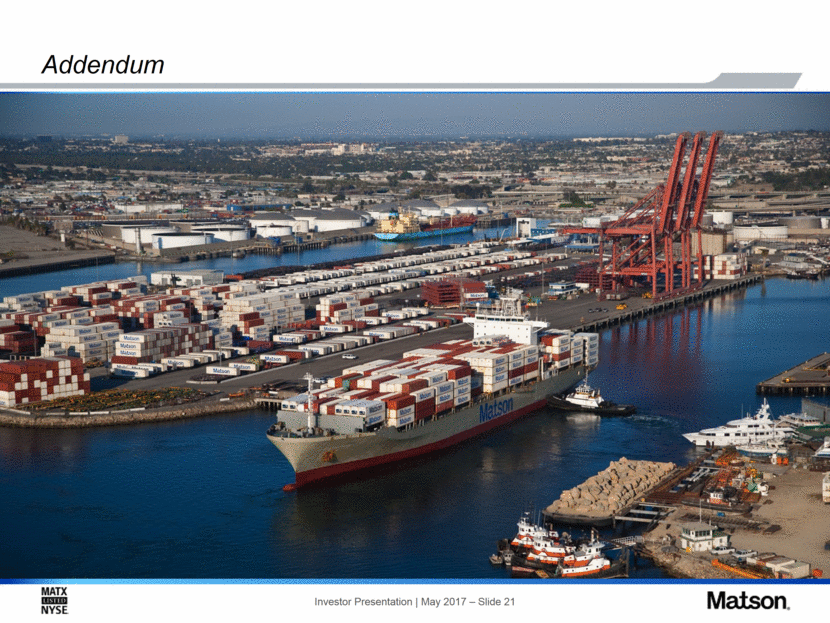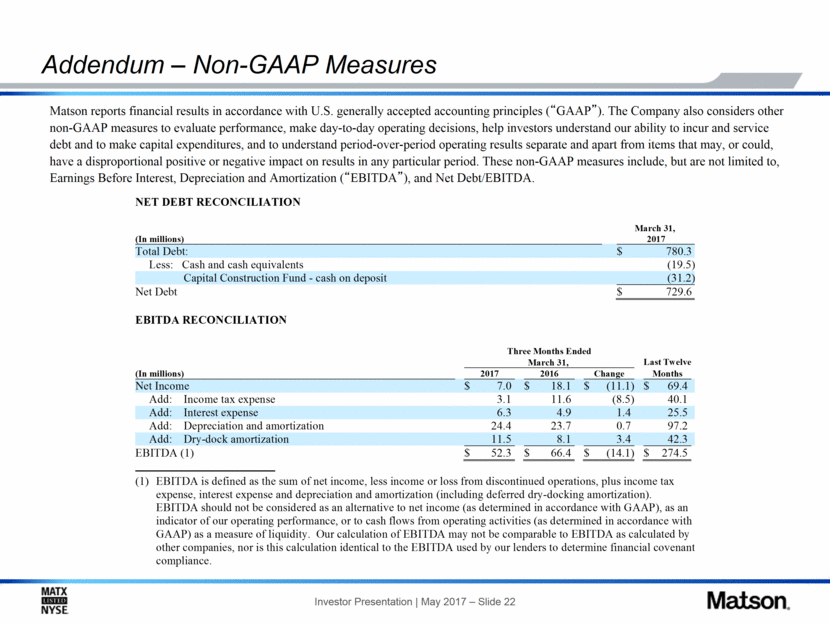Free signup for more
- Track your favorite companies
- Receive email alerts for new filings
- Personalized dashboard of news and more
- Access all data and search results
Filing tables
MATX similar filings
- 21 Sep 17 Regulation FD Disclosure
- 31 Jul 17 Results of Operations and Financial Condition
- 30 Jun 17 Entry into a Material Definitive Agreement
- 9 May 17 Regulation FD Disclosure
- 3 May 17 Results of Operations and Financial Condition
- 1 May 17 Matson, Inc. Board Appoints Matt Cox Chairman
- 21 Feb 17 Results of Operations and Financial Condition
Filing view
External links
